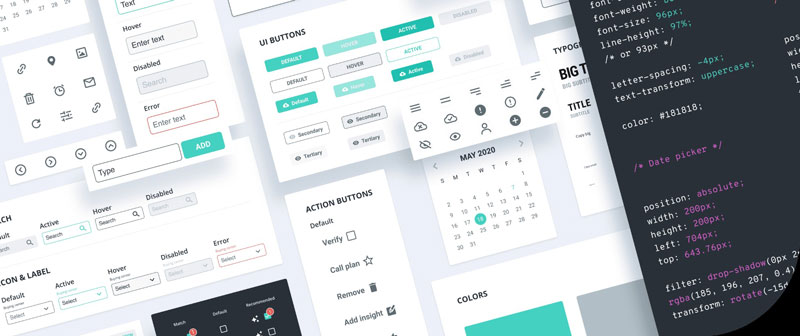Creating a successful SaaS product requires more than just great coding and engineering. It needs to be easy for users to understand, navigate, and use with an intuitive interface that meets their needs and goals. This is why UX design plays such an essential role in the development of software-as-a-service products.
This comprehensive guide will explore the fundamentals of UX design as they relate to SaaS products, from identifying user needs and goals to creating wireframes and prototyping designs based on feedback from real users. We’ll also discuss how analytics data can help inform your iterative process as you refine your product’s UI over time. By following these steps, you can ensure that your SaaS product has a strong foundation for success.
1. Understand the fundamentals of UX design
UX design is one of the most important factors for launching a successful software as a service (SaaS) product. Developing an understanding of the fundamentals of UX design is essential for any team aiming to develop a user-friendly, helpful platform. Familiarizing yourself with UX best practices will make all the difference when it comes to developing an effective and intuitive program. From learning how to evaluate user behaviors to reviewing common UI templates, gaining foundational knowledge in UX design can help you take your SaaS product from good to great. Also, if you need help or more information about this, you can get professional help with UX design by Eleken.
2. Identify user needs and goals
The second step in creating a comprehensive UX design for SaaS products is to identify the user needs and goals. This involves gaining an understanding of who your users are, what problems they face, and how your product can help them. To do this systematically, it can be helpful to create personas for different types of users and to map out the user journey, from problem recognition to resolution. Once you have identified the users’ needs and goals, you can begin to build a plan outlining how your product will meet those needs while achieving desired business outcomes. This would include:
- detailed scope outlining features
- designs
- operations geared toward meeting user objectives while optimizing the end-user experience.
3. Develop a clear user journey map
Once you’ve mapped out a user’s journey and identified all their interactions with a SaaS product, the next step is to develop a clear user journey map. This can be achieved by looking at how your chosen demographic uses a particular SaaS product and the feedback they give, as well as studying the most effective ways for users to interact with the software. With this knowledge in hand, you can create a comprehensive user journey map that outlines exactly what steps users need to take in order to sign up, complete tasks, and make purchases on your SaaS platform. Taking the time now to create a user-friendly experience for customers will pay off in spades when it comes to customer satisfaction and retention.
4. Design wireframes to visualize your product’s interface
Once you’ve got your product idea defined and firmly rooted in the customer needs that it’s addressing, the next step is to turn these ideas into tangible designs by creating wireframes. Wireframes are essentially an outline of your product’s user interface—they provide a visual roadmap for each page in your product, showing what content will be included, where it will live, and how users will interact with it. For example, if you plan on having forms or clickable elements in your app, this is where you’ll make those decisions. Given its importance for visualizing the design of your SaaS product and making sure it works properly when complete, taking the time to craft comprehensive wireframes should not be skipped in the UX process!
Step 5 requires creativity, as it’s all about creating an easy-to-use and intuitive user interface. This can be achieved by making use of visuals, such as icons and buttons, which should be indicative of the function they serve. In addition to this, creating a consistent and logical navigation structure that steers users in the right direction is also essential. Finally, you must always consider accessibility: your product should not only look good but should be accessible to all kinds of users including those with disabilities or impairments. All this means that designing a UI is much more than simply designing something that looks attractive – considerable thought must go into making an interface that people will enjoy using time after time.
6. Test prototypes with real users for feedback and refinement
At the sixth step of a comprehensive guide for UX design for SaaS products, testing prototypes with real users comes into play. This step helps to ensure that your product’s interface is maximally effective by having users interact directly with the prototype and give their feedback. Afterward, these insights can be used to refine your UX design further until it meets the highest standards. This also allows designers to detect potential usability issues before releasing the product. During this process, designers should observe how users interact with their prototypes and draw conclusions about how to change them in order to create a compelling user experience.
source: wp.com
7. Iterate on designs based on user feedback and insights from analytics data
Step 7 of user experience design for software as a service product is all about iteration. Of course, those designing UX will have an overall vision when starting the project but they shouldn’t just stick to that initial idea if evidence suggests otherwise. Instead, taking user feedback and insights from analytics data at each step of the way can help shape the product experience into something even better than originally envisioned. Iteration allows SaaS products to remain fresh, relevant, and highly useful for customers – creating a successful product-user relationship built on trust and satisfaction.
Conclusion
User experience design for software as a service (SaaS) products is a critical aspect of creating successful customer-facing solutions. In order to ensure this success, it’s important to follow a comprehensive approach that covers the seven key steps outlined in this article. Starting with gaining an understanding of the customer needs that the product should address, designers must then research the competition, develop a concept and create wireframes. An intuitive user interface should be crafted that is easy to use and navigate, prototypes need to be tested with real users for feedback and refinement, and finally, designs should be iterated based on user feedback and insights from analytics data. By following these steps in the UX design process for SaaS products, designers can create truly effective and enjoyable experiences for customers.
At the end of the day, the overall goal is to develop a product that addresses customer needs in an effective way and makes them happy with the resulting experience. Following these seven steps should put your SaaS product well on its way toward that goal!


0 Comments